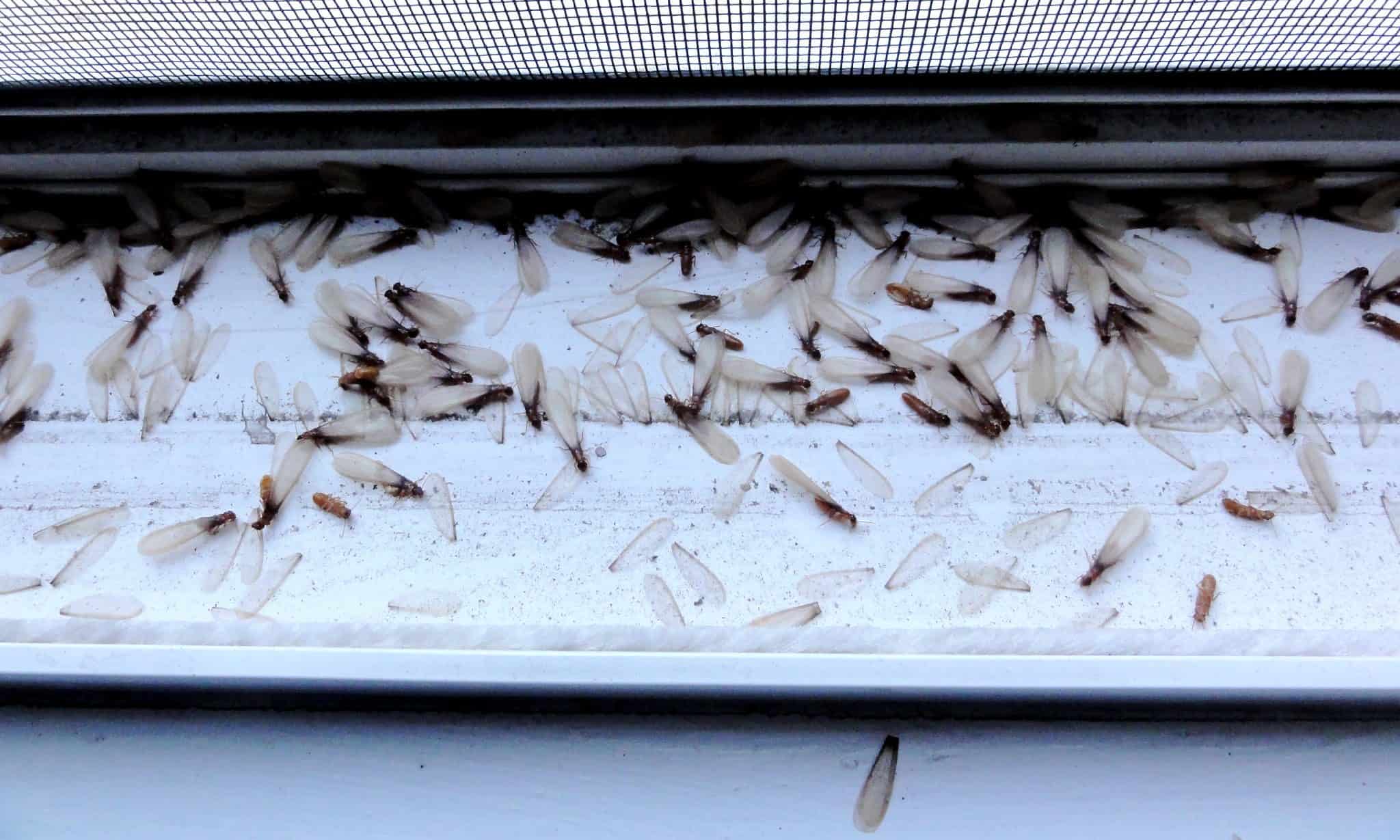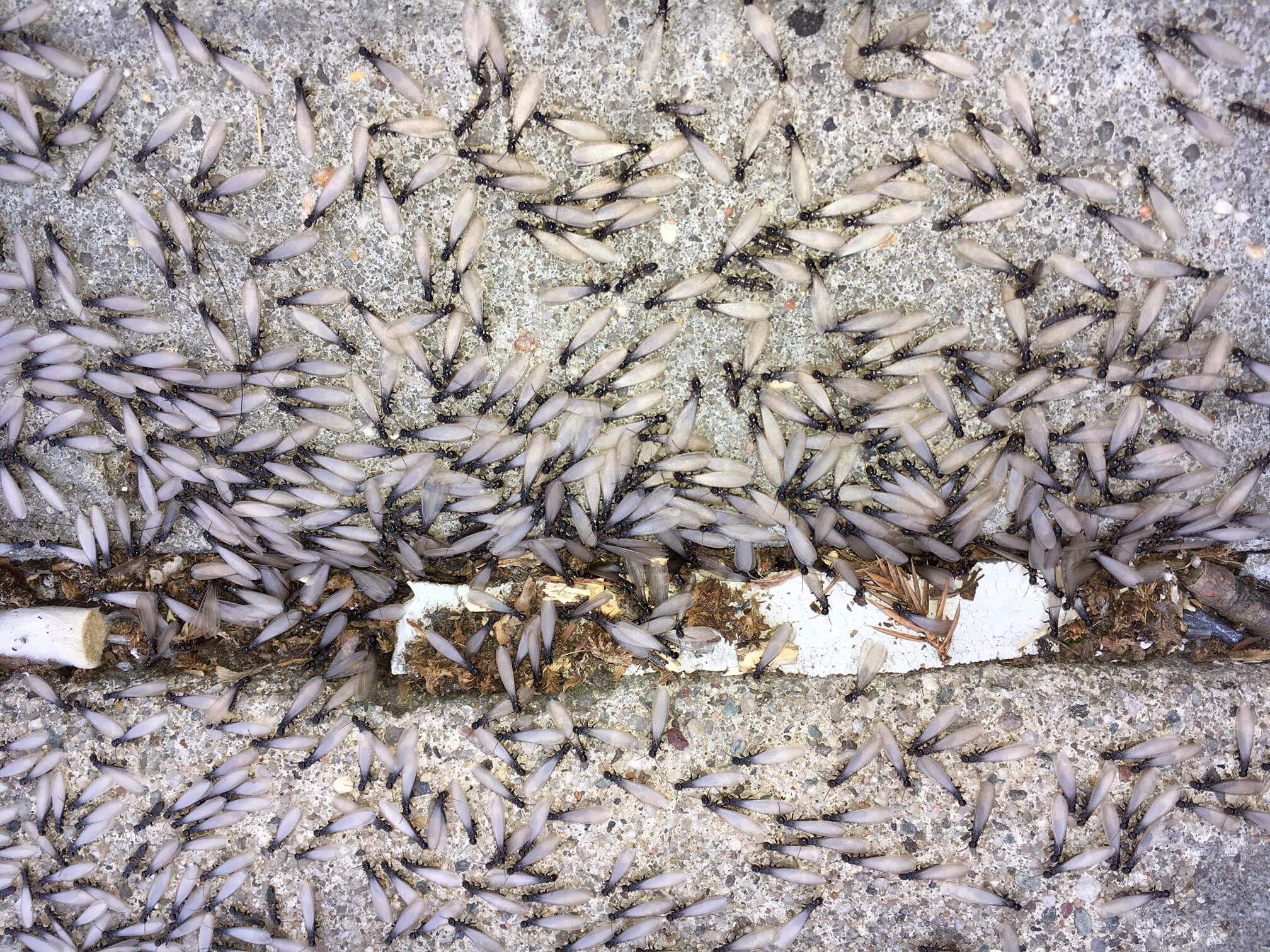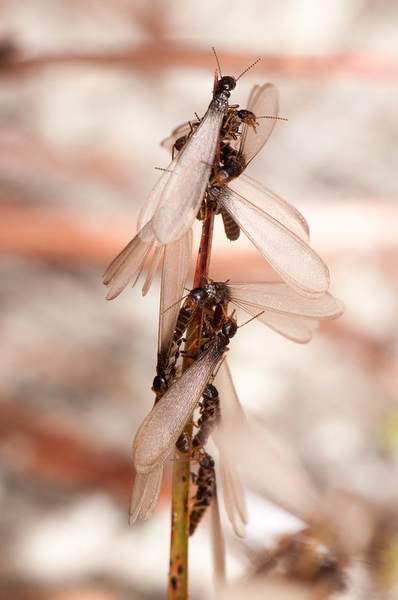Flying termites can be a homeowner’s nightmare. These pests can cause significant damage to wooden structures.
Flying termite infestations are a serious concern. They can destroy homes from the inside out. These termites are often mistaken for ants, but they are far more destructive. When you see them, it usually means there is a mature colony nearby.
Understanding the signs and causes of an infestation is crucial. It helps you act quickly to protect your home. This blog will guide you through the key information about flying termite infestations. Learn how to spot them, the damage they cause, and steps you can take to get rid of them. Don’t let these tiny invaders wreak havoc on your property. Knowledge is your first line of defense.
Introduction To Flying Termites
Flying termite infestation can cause serious damage to wood structures. These termites swarm during warm months to reproduce. Spotting them early can help prevent extensive damage.
Flying termites can cause damage to homes and buildings. They are often mistaken for ants. These pests are responsible for the destruction of wood structures. Understanding them can help you protect your property. In this section, we will explore flying termites in detail.
What Are Flying Termites?
Flying termites are winged insects. They are also known as swarmers or alates. These termites leave their colonies to start new ones. They have two pairs of wings of equal length. Their bodies are straight and soft. Flying termites are attracted to light. You may see them near windows or light sources.
Lifecycle Of Flying Termites
Flying termites have a unique lifecycle. It starts with the egg stage. After hatching, they become nymphs. Nymphs grow into different types of termites. Some become workers or soldiers. Others become reproductive termites. The reproductive termites grow wings. They fly out to form new colonies. This is known as swarming. After finding a mate, they shed their wings. Then, they start a new colony together.

Signs Of Infestation
Hey friends, today we’re diving into a topic that might make your skin crawl: flying termite infestations. If you’ve seen a few of these winged pests around your home, it’s time to check for signs of a bigger problem. Not sure where to start? Don’t worry, we’ve got you covered. Let’s break down the signs of infestation, so you know exactly what to look for.
Visible Signs
The most obvious sign of a termite infestation is seeing the termites themselves. These flying termites, also known as swarmers, are usually the first indication. They’re looking for a new place to start a colony. So if you spot them, it’s a red flag.
- Discarded Wings: Swarmers shed their wings after mating. You might find piles of wings near windowsills or doorways.
- Wood Dust: Termites leave behind wood-colored droppings called frass. This dust might be found near infested wood.
Structural Damage
Termites love to eat wood. If they’ve been around for a while, your home might show signs of damage. This isn’t just an eyesore; it can be dangerous.
- Buckling Wood: If your floors or walls are warping, termites might be to blame.
- Hollow Wood: Knock on wood structures. If it sounds hollow, termites might be eating away the insides.
- Cracks in Walls: Termites can cause cracks as they tunnel through wood and drywall.
The good news? Spotting these signs early can save you a lot of trouble. If you think you have termites, call a professional right away. Trust me, I once ignored a few termites in my shed, thinking it was no big deal. Big mistake. The damage cost me a small fortune to repair. So, keep an eye out for these signs and act fast!
Identifying Flying Termites
Hey friends, today let’s talk about identifying flying termites. You know, those pesky little bugs that can cause so much damage to our homes. It’s important to know what they look like and how they behave. This way, we can catch them early before they cause too much trouble. Let’s dive in and learn more about their physical characteristics and behavior patterns.
Physical Characteristics
First, let’s look at their physical characteristics. Flying termites can be tricky to spot. They are small, but a few key features can help you identify them:
- Wings: Flying termites have two pairs of wings. Both pairs are the same size and shape. Their wings are white and transparent. They can be up to twice the length of the termite’s body.
- Body: Their bodies are soft and straight. They usually have a uniform color, often brown or black.
- Antennae: Their antennae are straight, unlike ants which have bent antennae.
These features make them different from other insects. So, next time you see a small flying bug, check for these signs. It could be a flying termite!
Behavior Patterns
Next, let’s talk about their behavior patterns. Understanding how flying termites behave can help you identify them. Here are some common patterns:
- Swarming: Flying termites often swarm in large groups. They usually swarm during the day or after rain. Swarming is their way of finding a new place to start a colony.
- Attracted to Light: These termites are attracted to light. You might find them near windows or light sources in your home.
- Shedding Wings: After swarming, flying termites shed their wings. You may find piles of wings around your home. It’s a clear sign that termites are nearby.
By knowing these patterns, you can spot flying termites early. This can save you a lot of trouble down the road.
So, there you have it. Identifying flying termites is all about knowing what to look for and understanding their behavior. Keep an eye out for their physical characteristics and watch for their behavior patterns. This way, you can catch them before they cause too much damage. Stay vigilant, friends!

Credit: safeguardpestcontrol.com.au
Preventing Infestation
Hey friends, today we’re going to talk about something really important – preventing a flying termite infestation. We all know how frustrating and costly it can be when these pesky insects invade our homes. But don’t worry, with a few simple steps, you can keep your house termite-free. Let’s dive into some easy tips and tricks to prevent an infestation.
Home Maintenance Tips
First things first, taking care of your home is crucial. Just like how we need regular check-ups, our homes need them too. Here are some tips for maintaining your home:
- Regular Inspections: Make it a habit to inspect your home regularly, especially the wooden structures. Look for signs of damage or mud tubes.
- Fix Leaks: Termites love moisture. Fix any leaky pipes or faucets to keep them away.
- Ventilation: Ensure proper ventilation in your home. This helps to keep the wood dry and less attractive to termites.
- Seal Cracks: Seal any cracks or gaps in your home’s foundation. These could be entry points for termites.
- Store Wood Properly: Keep firewood or any wooden materials away from your home. Termites can easily move from these to your house.
Landscaping Precautions
Now, let’s talk about your yard. Your landscaping can either invite or deter termites. Here are some landscaping precautions you can take:
- Avoid Mulch: Mulch is great for plants but not so much for keeping termites away. Use alternatives like gravel or stones.
- Trim Plants: Keep plants and bushes trimmed and away from your house. This prevents termites from using them as bridges to your home.
- Remove Dead Trees: Dead trees and stumps are termite magnets. Remove them promptly to avoid attracting termites.
- Proper Drainage: Ensure proper drainage around your home. Standing water can attract termites and other pests.
- Barrier Treatments: Consider applying termite barriers around your home. These treatments can help keep termites at bay.
Following these simple tips can make a big difference in preventing a flying termite infestation. Regular maintenance and a little attention to your landscaping go a long way. Remember, prevention is always better than cure. Stay vigilant and keep those termites out!

Natural Prevention Methods
Flying termites can cause significant damage to your home. Preventing an infestation naturally is not only eco-friendly but also safe for your family and pets. Below are some effective natural prevention methods to keep these pests at bay.
Essential Oils
Essential oils are a natural deterrent for flying termites. Oils like clove, tea tree, and neem work well. Mix a few drops of the oil with water. Spray it around entry points, windows, and doors. These oils have strong scents that repel termites.
Beneficial Nematodes
Beneficial nematodes are tiny worms that hunt termites. They are harmless to humans and pets. You can buy them from garden stores or online. Apply them to your garden and lawn. They will find and destroy termite colonies.

Credit: resteasypestcontrol.com
Chemical Treatments
Hey friends, today we’re diving into the world of chemical treatments for flying termite infestations. These tiny pests can cause big problems in your home. The good news? With the right treatments, you can get rid of them. We’ll discuss two main methods: insecticides and bait stations.
Insecticides
Insecticides are one of the most common ways to deal with termites. They work by killing the termites on contact. It’s kind of like using bug spray on ants. Simple, right? Here’s what you need to know:
- Types: There are two main types of insecticides: liquid and aerosol. Liquid insecticides are usually applied to the soil around your home. Aerosol ones can be sprayed directly on the termites.
- Application: You can apply insecticides yourself or hire a professional. If you choose to do it yourself, make sure to follow the instructions carefully. Safety first!
- Effectiveness: Insecticides can be very effective if used correctly. But remember, they might not reach termites hidden deep inside the walls.
I recently asked a friend who had a termite problem. She used a liquid insecticide around her house. She said it worked well but she had to reapply it a few times. So, be prepared for that.
Bait Stations
Another popular method is using bait stations. Think of it like setting a trap. The termites are attracted to the bait, eat it, and then take it back to their colony. The whole colony gets poisoned. Smart, right? Here’s how it works:
- Setup: Bait stations are set up around your home. They are placed in the ground where termites are likely to pass by.
- Monitoring: These stations need to be checked regularly. If termites are found in the bait, it means they are active in that area.
- Replacement: The bait needs to be replaced periodically to ensure it’s effective. This can be done by you or a professional pest control service.
I remember reading a story online about a couple who used bait stations. They said it took some time, but it eventually got rid of the termites completely. The key was patience and regular checks.
So, whether you choose insecticides or bait stations, both methods can help you tackle those pesky flying termites. The important thing is to act quickly before they cause serious damage to your home.
Professional Pest Control
Flying termite infestations can cause serious damage to your home. Professional pest control services help eliminate these pests effectively. Protect your property with expert termite solutions.
Flying termite infestations pose a serious threat to homes. These pests can cause significant damage. Seeking professional help ensures effective treatment. Experts have the right tools and knowledge. They can identify and eliminate termites.
When To Call Professionals
Notice flying termites indoors? Call professionals immediately. Swarms inside often mean severe infestations. Spot termite wings near windows? It indicates termites are active. See mud tubes or damaged wood? Contact pest control services. Professionals can assess the situation. They provide the best solutions.
What To Expect From Services
Expect a thorough inspection first. Professionals check for signs of termites. They use advanced tools to detect hidden colonies. After inspection, they offer treatment options. Treatments may include liquid barriers or bait stations. Experts apply these methods safely. Follow-up visits ensure the termites are gone. Regular monitoring prevents future infestations. Professional services give peace of mind. They protect your home from damage.

Credit: content.ces.ncsu.edu
Post-infestation Steps
Flying termite infestations can cause significant damage to your property. Once the infestation is under control, it is crucial to take steps to repair and prevent future damage. These post-infestation steps are essential to ensure your home remains safe and secure.
Repairing Damage
Inspect all areas affected by the termites. Look for signs of weakened wood and structural damage. Replace or repair damaged wood to restore structural integrity. Use treated wood to prevent future infestations. Seal any cracks or crevices where termites might enter. This prevents them from finding their way back into your home.
Ongoing Monitoring
Regularly inspect your home for signs of termites. This helps catch any new infestations early. Use termite bait stations around your property. These can help detect and control termites before they cause significant damage. Keep your home and surroundings dry. Termites thrive in moist environments, so fix any leaks and ensure proper ventilation.
Maintain a barrier between soil and wood structures. This can deter termites from accessing your home. Consider professional pest control services for regular check-ups. They have the expertise to spot early signs of termite activity.
Frequently Asked Questions
Should I Worry If I See Flying Termites?
Yes, flying termites can indicate a potential infestation. Inspect your home and contact a pest control professional for advice.
How Do I Get Rid Of Flying Termites In My House?
Eliminate flying termites by using termite baits, insecticides, or calling pest control. Seal cracks and remove wood debris.
How Do You Find The Source Of Flying Termites?
To find the source of flying termites, inspect your home for mud tubes, damaged wood, and termite droppings. Check areas with moisture, such as basements and crawl spaces. Look for swarming termites near light sources and windows.
How Long Does The Flying Termite Season Last?
Flying termite season typically lasts 3-4 weeks during late spring and summer. Swarms often occur after rain.
Conclusion
Dealing with flying termite infestations requires quick action and vigilance. These pests can cause significant damage to your home. Regular inspections help detect early signs of termites. Seek professional help if you notice any signs of infestation. Protect your home by sealing cracks and removing wood debris.
Simple steps can prevent future infestations. Stay alert and keep your home termite-free.

